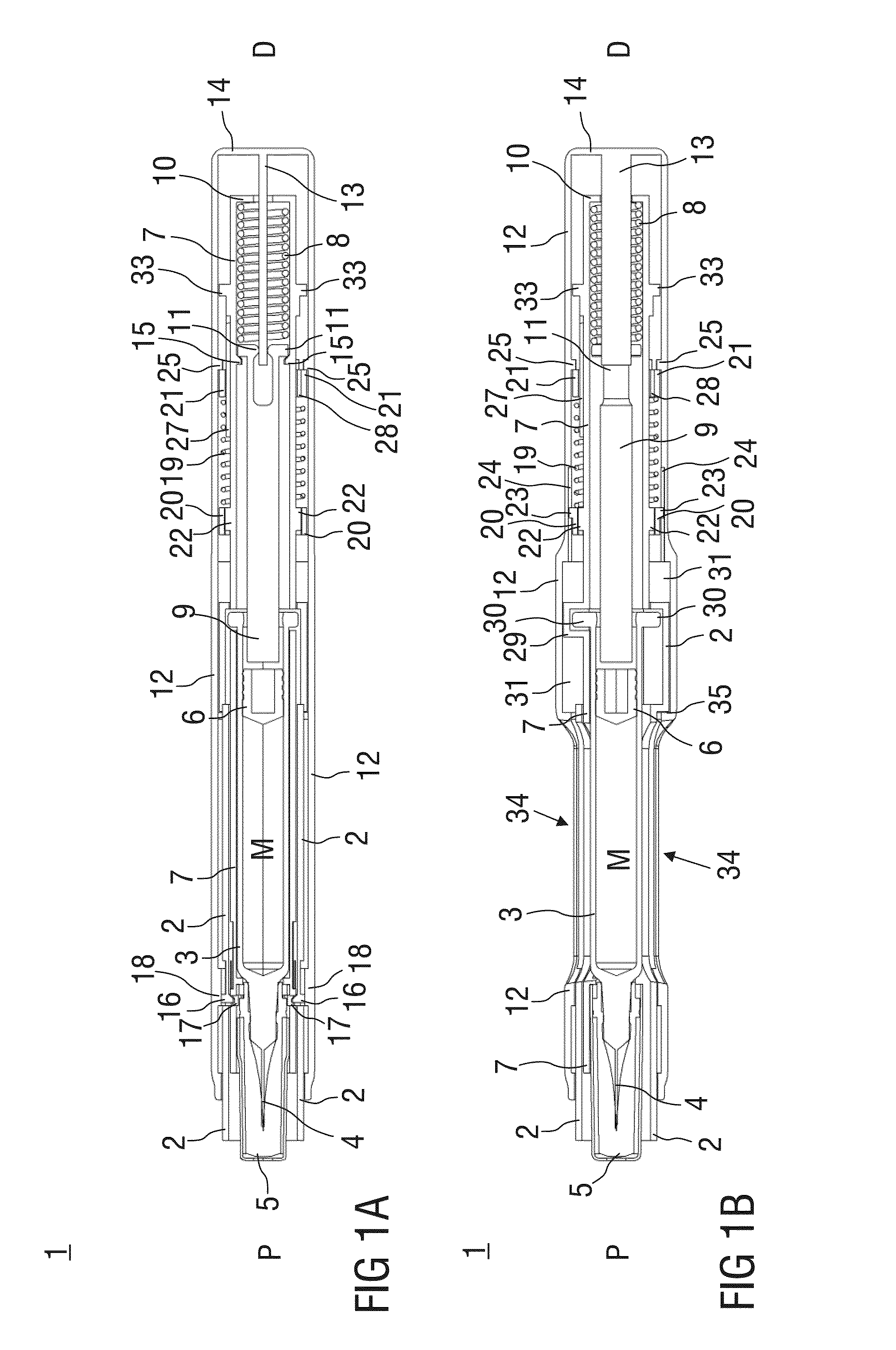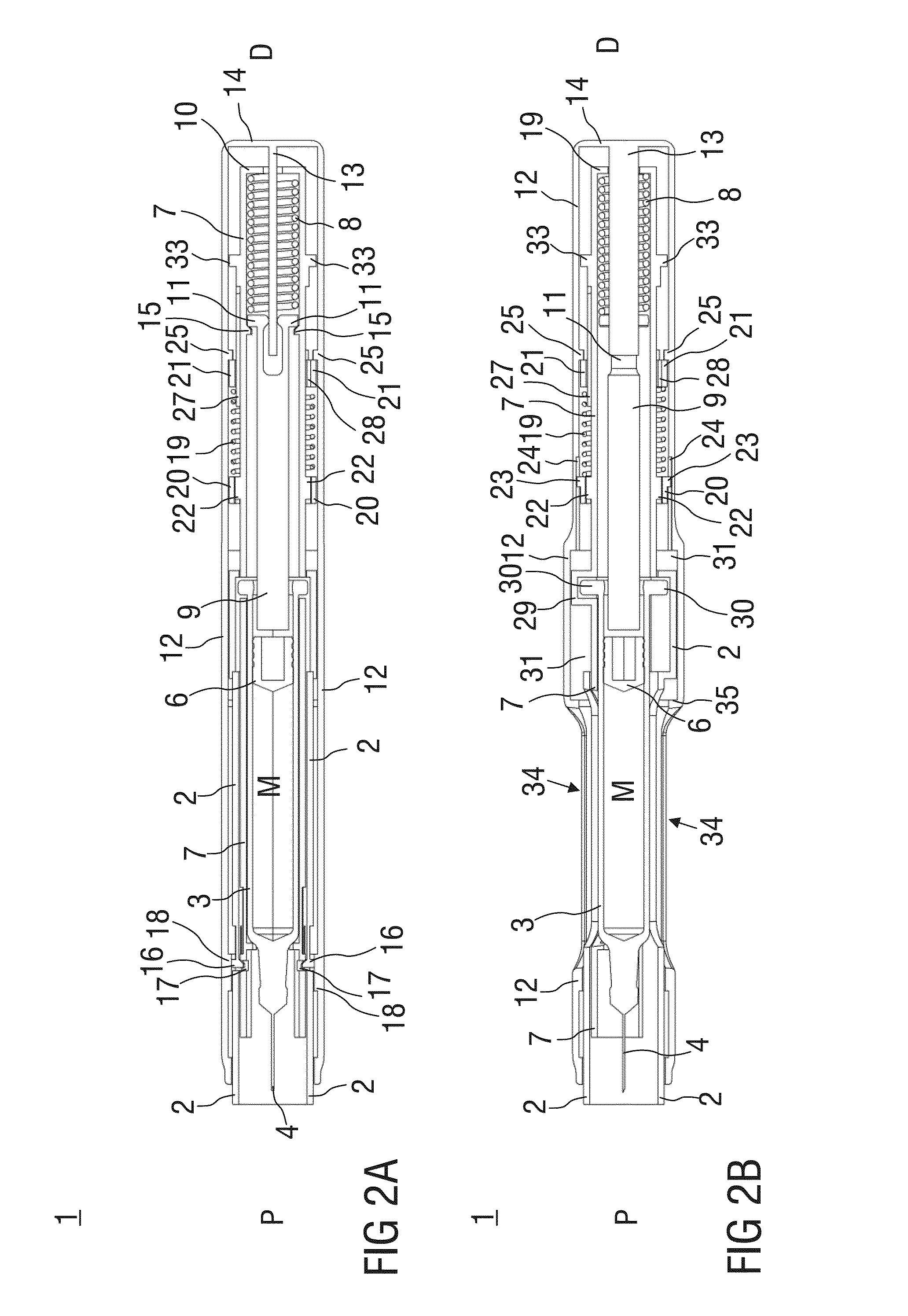Auto-injector
a technology of auto-injector and injection force, which is applied in the direction of intravenous devices, infusion needles, other medical devices, etc., can solve the problems of user delivery an underdose, user may be too high in the injection force, and the risk of users and healthcare professionals
- Summary
- Abstract
- Description
- Claims
- Application Information
AI Technical Summary
Benefits of technology
Problems solved by technology
Method used
Image
Examples
Embodiment Construction
[0061]FIG. 1 shows two longitudinal sections in different section planes of an auto-injector 1, the different section planes approximately 90° rotated to each other, wherein the auto-injector 1 is in an initial state prior to starting an injection. The auto-injector 1 comprises a chassis 2. A syringe 3, e.g. a Hypak syringe, with a hollow injection needle 4 is arranged in a proximal part of the auto-injector 1. When the auto-injector 1 or the syringe 3 is assembled a protective needle shield 5 is attached to the needle 4. A stopper 6 is arranged for sealing the syringe 3 distally and for displacing a liquid medicament M through the hollow needle 4. The syringe 3 is held in a tubular carrier 7 and supported at its proximal end therein. The carrier 7 is slidably arranged in the chassis 2.
[0062]A drive spring 8 in the shape of a compression spring is arranged in a distal part of the carrier 7. A plunger 9 serves for forwarding the force of the drive spring 8 to the stopper 6.
[0063]The ...
PUM
 Login to View More
Login to View More Abstract
Description
Claims
Application Information
 Login to View More
Login to View More - R&D
- Intellectual Property
- Life Sciences
- Materials
- Tech Scout
- Unparalleled Data Quality
- Higher Quality Content
- 60% Fewer Hallucinations
Browse by: Latest US Patents, China's latest patents, Technical Efficacy Thesaurus, Application Domain, Technology Topic, Popular Technical Reports.
© 2025 PatSnap. All rights reserved.Legal|Privacy policy|Modern Slavery Act Transparency Statement|Sitemap|About US| Contact US: help@patsnap.com



